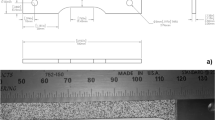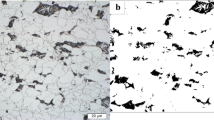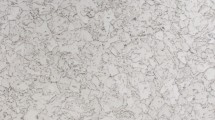Abstract
Integrated computational materials engineering (ICME)-based tools and techniques have been identified as the best path forward for distortion mitigation in thin-plate steel construction at shipyards. ICME tools require temperature-dependent material properties to achieve accurate computational results for distortion and residual stress. However, the required temperature-dependent material property databases of U.S. Navy-relevant steels are not available in the literature. Therefore, as part of a Lightweight Innovations for Tomorrow program, a comprehensive testing plan for some of the most common marine steels used in the construction of US naval vessels was completed. This testing plan included DH36, HSLA-65, HSLA-80, HSLA-100, HY-80, and HY-100 steel with a nominal thickness of 4.76 mm (3/16-in.). This report is part of a seven-part series detailing the pedigreed steel data. The first six reports will report the material properties for each of the individual steel grades, whereas the final report will compare and contrast the measured steel properties across all six steels. This report will focus specifically on the data associated with DH36 steel.





































CTC data adapted from Ref. [45]

CTC data adapted from Ref. [45]

CTC data adapted from Ref. [45]










Similar content being viewed by others
References
Andersen LF (2000) Residual stresses and deformations in steel structures. Doctoral Thesis, Department of Naval Architecture and Offshore Engineering, University of Denmark
MIL-S-22698C (1988) Military specification: steel plate, shapes, and bars, weldable ordinary strength and higher strength: structural
ASTM A945/M-16 (2016) Standard specification for high-strength low-alloy structural steel plate with low carbon and restricted sulfur for improved weldability, formability, and toughness, ASTM International, West Conshohocken, PA
NAVSEA Technical Publication T9074-BD-GIB-010/0300 Rev. 2 (2012) Base materials for critical applications: requirements for low alloy steel plate, forgings, castings, shapes, bars, and heats of HY-80/100/130 and HSLA-80/100
Fisher CR, Bechetti DH, Semple JK, Zhang W (2020) Temperature-dependent material database: DH36. https://doi.org/10.13011/m3-w0ew-pd58
ASTM A541, M-05 (2015) Standard specification for quenched and tempered carbon and alloy steel forgings for pressure vessel components. ASTM International, West Conshohocken, p 2015
ASTM A131/M-14 (2014) Standard specification for structural steel for ships. ASTM International, West Conshohocken
American Bureau of Shipping (2016) Rules for materials and welding (part 2). Houston, TX
ASTM E417-17 (2017) Standard test method for analysis of carbon and low-alloy steel by spark atomic emission spectrometry, ASTM International, West Conshohocken
Eisler GR, Fuerschbach PW (1997) SOAR: an extensible suite of codes for weld analysis and optimal weld schedules. In: Seventh international conference on computer technology in welding, San Francisco
ASTM E1461-13 (2013) Standard test method for thermal diffusivity by the flash method. ASTM International, West Conshohocken
ASTM E1269–11 (2018) Standard test method for determining specific heat capacity by differential scanning calorimetry. ASTM International, West Conshohocken, p 2018
ASTM A370-18 (2018) Standard test methods and definitions for mechanical testing of steel products, ASTM International, West Conshohocken
ASTM E21-17 (2017) Standard test methods for elevated temperature tension tests of metallic materials, ASTM International, West Conshohocken
Huang TD, Harbison M, Scholler S, Rucker H, Hu J, Dong P, Collette M, Chung H, Groden M, Zhang W, Semple J, Kirchain R, Roth R, Bustamante M, Yang Y, Dull R, Gooroochurn Y, Doroudian M, Fisher CF, Sinfield M, Kihl D, Gonzalez A (2016) Robust distortion control methods and implementation for construction of lightweight metallic structures. SNAME Trans
Hehemann RF, Kinsman KR, Aaronson HI (1972) A debate on the bainite reaction. Metall Trans 3:1077–1094
Aaronson HI, Spanos G, Reynolds WT (2002) A progress report on the definitions of bainite. Scripta Mater 47(3):139–144
Aaronson HI, Enomoto M, Lee JK (2010) Mechanisms of diffusional phase transformations in metals and alloys, Boca Raton. CRC Press, FL
Easterling K (1992) Introduction to the physical metallurgy of welding, 2nd edn. Butterworth-Heinemann, Oxford
Na S-H, Seol J-B, Jafari M, Park C-G (2017) A correlative approach for identifying complex phases by electron backscatter diffraction and transmission electron microscopy. Appl Microsc 47(1):43–49
Das S, Ghosh A, Chatterjee S, Rao PR (2003) Microstructural characterization of controlled forged HSLA-80 steel by transmission electron microscopy. Mater Charact 50(4–5):305–315
Fonda RW, Spanos G (2000) Microstructural evolution in ultra-low-carbon steel weldments—part I: controlled thermal cycling and continuous cooling transformation diagram of the weld metal. Metall Mater Trans A 31:2145–2153
Fonda RW, Spanos G, Vandermeer RA (1994) Observations of plate martensite in a low carbon steel. Scr Metall et Mater 31(6)
Yurioka N, Oshita S, Tamehiro H (1983) Determination of necessary preheating temperature in steel welding. Weld J 52(6):147-s–153-s
Andersson JO, Herlander T, Hoglund L, Shi PF, Sundman B (2002) Thermo-calc & DICTRA, computational tools for materials science. Calphad 26:92–101
Rasband WS (1997–2018) ‘ImageJ,‘ U.S. National Institutes of Health, Bethesda, MD, USA, 1997–2018. https://imagej.nih.gov/ij/
ASTM E1382–97 (2015) Standard test methods for determining average grain size using semiautomatic and automatic image analysis. ASTM International, West Conshohocken, p 2015
Heinze C, Pittner A, Rethmeiri M, Babu SS (2013) Dependency of martensite start temperature on prior austenite grain size and its influence on welding-induced residual stress. Comput Mater Sci 69:251–260
Shome M, Mohanty ON (2006) Continuous cooling transformation diagrams applicable to the heat-affected zone of HSLA-80 and HSLA-100 steels. Metall Mater Trans A 37A:2159–2169
Taljat B, Radhakrishnan B, Zacharia T (1998) Numerical analysis of GTA welding process with emphasis on post-solidification phase transformation effects on residual stress. Mater Sci Eng, A A246:45–54
Yue X, Lippold JC, Alexandrox BT, Babu SS (2012) Continuous cooling transformation behavior in the CGHAZ of naval steels. Weld J 91(3):67-s–75-s
Mohanty RR, Fonstein N, Girina O (2011) Effect of heating rate on the austenite formation in low-carbon high-strength steels annealed in the intercritical region. Metall Mater Trans A 42A(12):3680–3690
Oliveira FLG, Andrade MS, Cota AB (2007) Kinetics of austenite formation during continuous heating in a low carbon steel. Mater Charact 58:256–261
Apple CA, Krauss G (1972) The effect of heating rate on the martensite to austenite transformation in Fe–Ni–C alloys. Acta Mater 20:849–856
Bainite Committee of The Iron AND Steel Institute of Japan (1992) Atlas for bainitic microstructures, Vol. 1: continuous-cooled microstructures of low carbon HSLA steels. The Iron & Steel Institute of Japan
Bhadeshia HKDH, Honeycombe RWK (2006) Steels: microstructure and properties, 3rd edn. Butterworth-Heinemann, Oxford
Sinha AK (1989) Ferrous physical metallurgy, Stoneham. Butterworth Publishers, MA
Thewlis G (2004) Classification and quantification of microstructures in steels. Mater Sci Technol 20:143–160
International Institute of Welding (1985) Compendium of weld metal microstructures and properties: submerged-arc welds in ferritic steel, Cambridge. Woodhead Publishing, UK
Peet M (2014) Prediction of martensite start temperature. Mater Sci Technol 31(11):1370–1375
Kang S, Yoon S, Lee S-J (2014) Prediction of Bainite start temperature in alloy steels with difference grain sizes. ISIJ Int 54(4):997–999
Capdevilla C, Caballero FG, Garcia de Andres C (2002) Determination of Ms temperature in steels: a Bayesian neural network model. ISIJ Int 42:894–902
Kirkaldy JS, Venugopalan D (1984) Phase transformations in ferrous alloys. In: Phase transformations in ferrous alloys: proceedings of an international conference, Philadelphia
Lee S-J, Park J-S, Lee Y-K (2008) Effect of austenite grain size on the transformation kinetics of upper and lower bainite in a low-alloy steel. Scripta Mater 59(1):87–90
Valencia JJ, Papesch C (2005) Automated thermal plate forming: apparent specific heat and thermal expansion during heating of HSLA-80 and DH-36 steel plates. Naval Metalworking Center as operated by Concurrent Technologies Corporation, Johnstown
ASTM E111-17 (2017) Standard test method for Young’s Modulus, tangent modulus, and chord modulus. ASTM International, West Conshohocken
E. 1993-1-1 (2005) Eurocode 3: design of steel structures—part 1-1: general rules and rules for buildings
E. 1993-1-2 (2005) Eurocode 3: design of steel structures—part 1-2: general rules—structural fire design
Holsberg P (1997) An overview of some current research on welding residual stresses and distortion in the U.S. Navy. Naval Surface Warfare Center, Carderock Division, West Bethesda
Acknowledgements
The work was funded by the Office of Naval Research (ONR) and the Office of the Secretary of Defense (OSD), in support of the Lightweight Innovations for Tomorrow (LIFT) Institute’s program entitled, Robust Distortion Control Methods and Implementation for Construction of Lightweight Metallic Structures. The authors would like to thank Huntington Ingalls Industries—Ingalls Shipbuilding for supplying the steel material tested for this program, as well as all team members who worked on the LIFT Joining-R1-3 program.
Author information
Authors and Affiliations
Corresponding author
Ethics declarations
Conflict of interest
On behalf of all authors, the corresponding author states that there is no conflict of interest.
Rights and permissions
About this article
Cite this article
Bechetti, D.H., Semple, J.K., Zhang, W. et al. Temperature-Dependent Material Property Databases for Marine Steels—Part 1: DH36. Integr Mater Manuf Innov 9, 257–286 (2020). https://doi.org/10.1007/s40192-020-00184-2
Received:
Accepted:
Published:
Issue Date:
DOI: https://doi.org/10.1007/s40192-020-00184-2




